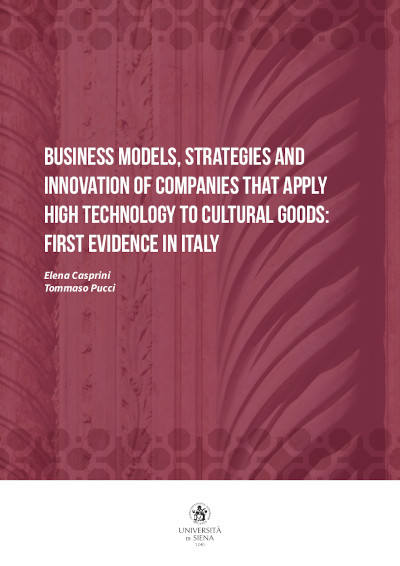Business models, strategies and innovation of companies that apply high technology to cultural goods: first evidence in Italy
Elena Casprini
Tommaso Pucci
This book intends to provide an overview about a specific kind of com- panies, those that apply high technology to cultural goods. In fact, if we consider the whole “supply chain” linked to cultural goods, we could also identify transportation and food companies (considering those actors involved in the broader tourism sector). Rather, there is a small niche of companies that have developed or are using ad hoc innovations to provi- de solutions capable of identifying, protecting, valorizing cultural goods and making them available. These companies are particularly interesting since they belong to multiple sectors, have business models, strategies and innovation processes that are very peculiar due to the resource con- straints and the contextual uncertainties that they usually face.
Advancing our previous work (Casprini et al., 2014), this book provides a deeper overview about the actors and the factors that may influence how companies that apply high technologies to cultural goods operate. Additionally, it presents some preliminary results of a survey conducted on 120 companies in Italy. The detailed description of two case studies in Tuscany, the spin-off ATS and the centenary family firm Piacenti, conclude the book.

